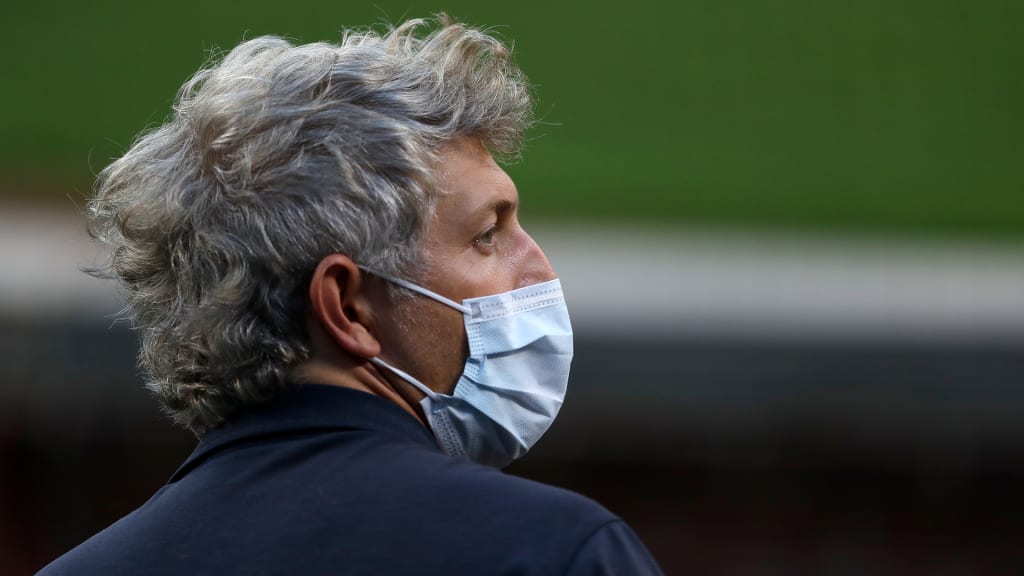
In a lot of ways, the Orioles approach Monday's already strange Trade Deadline in the strangest of situations. They are a rebuilding club, led by a relatively new front office that committed to operating in the interest of its long-term goals. They are also one of the surprise of teams of 2020, having played well enough halfway through the 60-game season to potentially compete for a playoff spot.
Where, exactly does a club like that stand 2020 with regards to the trade market? Are they buyers? Sellers?
The answer: something in-between. Thirty games or so won’t turn the Orioles from rebuilders into big buyers at the Deadline, but it could force them not to sell, at least as aggressively as they might have during a normal year.
“We’re not going to just sell just to sell and get more prospects. But we’re not going to hold onto every single person on the team just because we’re close to a .500 club right now,” Orioles executive vice president and general manager Mike Elias said recently. “Despite the fact that our club is playing well and has a good record and is in the mix, we’re still listening on players that are on our Major League roster if it makes sense for our future and for next year and the broader picture. But we’re not extra-motivated to do anything, and we’re listening to baseball trades as they come along.”
An important wrinkle to this year’s Trade Deadline is that teams can only trade players who are part of their 60-man player pool (assigned either to the big league team or the alternate training site). Clubs are permitted to include players to be named later in trades, however. Additionally, scouts have not been allowed to attend games in person, so all assessments of prospects have been done based on provided video and data and past knowledge.
This has already affected the Orioles, who received a player to be named later from the Marlins for Richard Bleier last month. There is a good chance it will again. Though there are exceptions, by and large teams across the league included two types of prospects in their pools: those that can help at the big league level soon and top prospects that are are unlikely to be dealt. The O’s are expected to target organizational prospects in the middle ground -- i.e., those not in pools and who must be given the PTBNL status in the short term.
Buy/sell/hold?
Sell, but they might have to get creative. In this context, “creative” means taking on money to offset the roughly $17 million Alex Cobb is owed through next season, which would probably be required to flip the veteran right-hander. He is fully recovered from the hip issues that derailed his 2019 and has been the O’s most consistent starter so far in '20. But his injury history and the financial uncertainty the industry is experiencing across the board this year means that Baltimore might need to eat at least some of Cobb’s salary to facilitate a deal.
Also clouding the Orioles’ outlook is the fact that many of the top chips Elias inherited are either already gone or no longer tradeable. Dylan Bundy, Jonathan Villar and Bleier have already been dealt, and José Iglesias' recent quad injury probably hampers the veteran shortstop's market.
What they want
The short answer is prospects -- long-term pieces whom the Orioles can picture as part of their ongoing rebuild. If past trades are any guide, they are looking for pitching, especially upside arms they can use to restock the lower rungs of their Minor League ranks. The O’s system is top-heavy on the pitching side, and many of those arms should reach the Majors by the end of next year.
Remember what the Orioles got in return for Bundy: four pitchers. And for Villar? A pitcher. Meanwhile they have gone in the opposite direction at the Draft, using 12 of their top 13 picks under Elias on position players, many of whom remain several years away.
What they have to offer
Outside of Cobb and Iglesias, Mychal Givens is the Orioles’ best chip. For one, he doesn’t come with the financial or injury hurdles: Givens is owed just north of $600,000 through the end of this season, and he remains under team control through 2021. Secondly, he’s simply been excellent this season.
Moved back into a setup role after struggling in the ninth inning last year, the righty pitched to a 1.38 ERA and 37.3 percent strikeout rate over his first 12 appearances. Givens isn’t going to be targeted to close games, but he profiles as a veteran relief option many have long pegged to be even better outside the hitter-friendly confines of Camden Yards. Teams are also likely to kick the tires on the likes of Miguel Castro and Tanner Scott, though age and upside probably makes Baltimore less likely to move either.
Chance of a deal
60 percent. This year’s expanded playoff format probably translates to a seller’s market for relievers, and Givens’ bounceback year increase the likelihood that he could be dealt. The error margins are wide here -- the Orioles could swing three deals just as easily as they could stand pat, like they did last year. But one feels like a safe middle ground.
